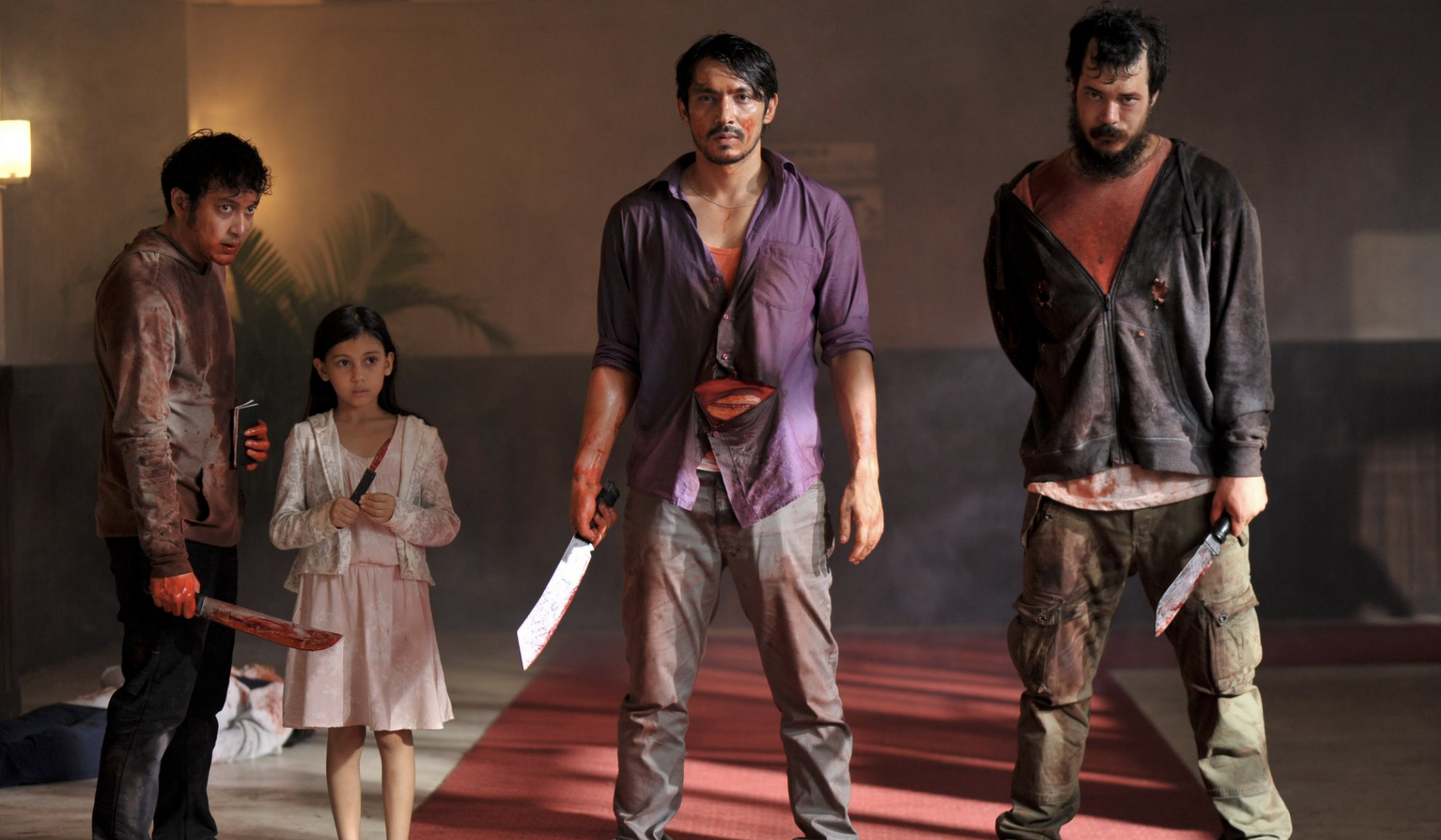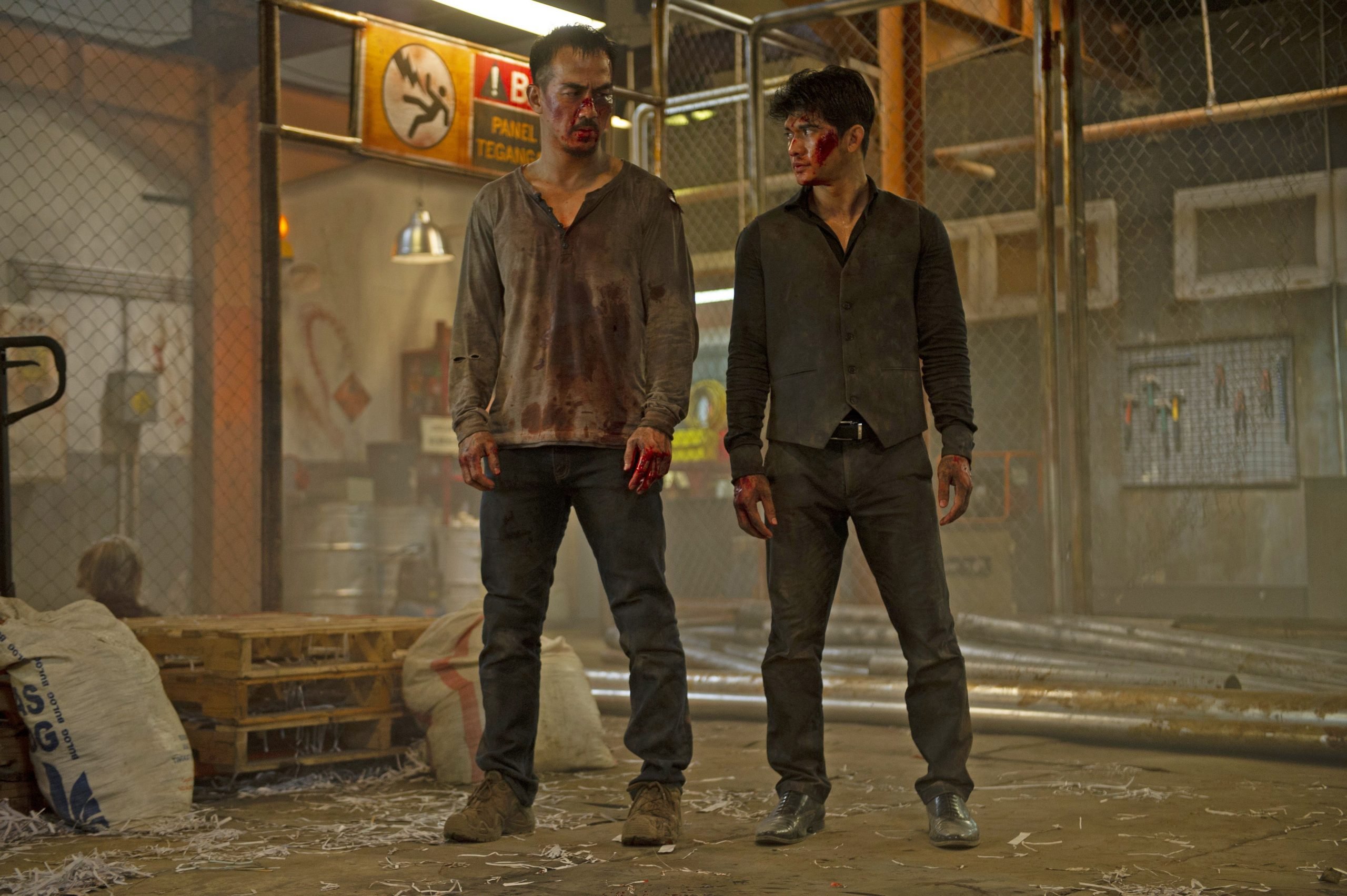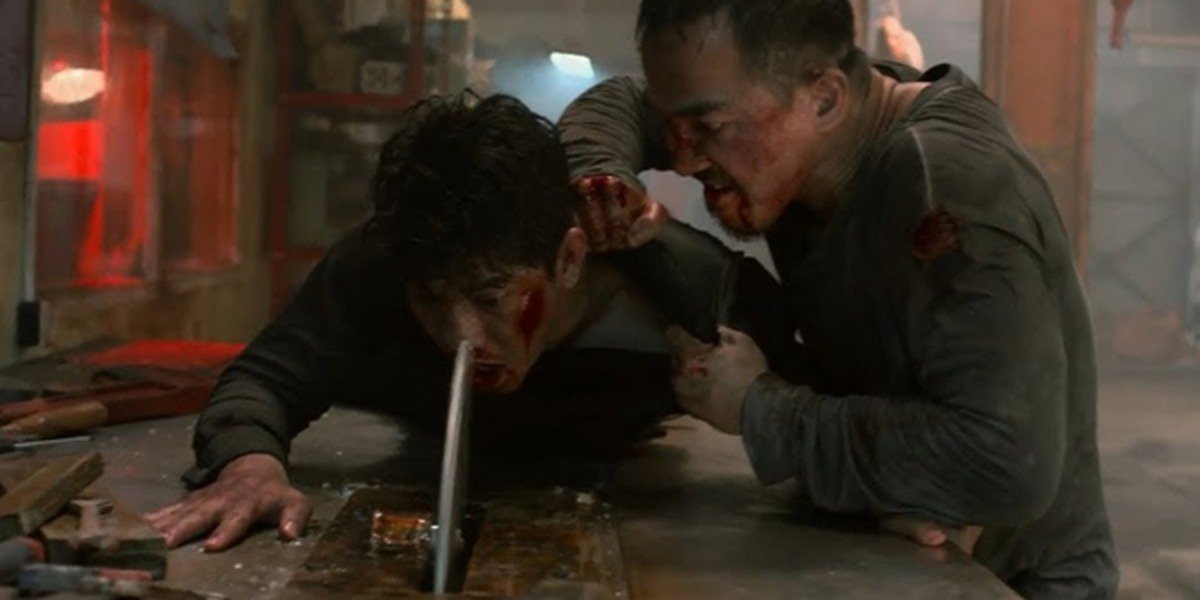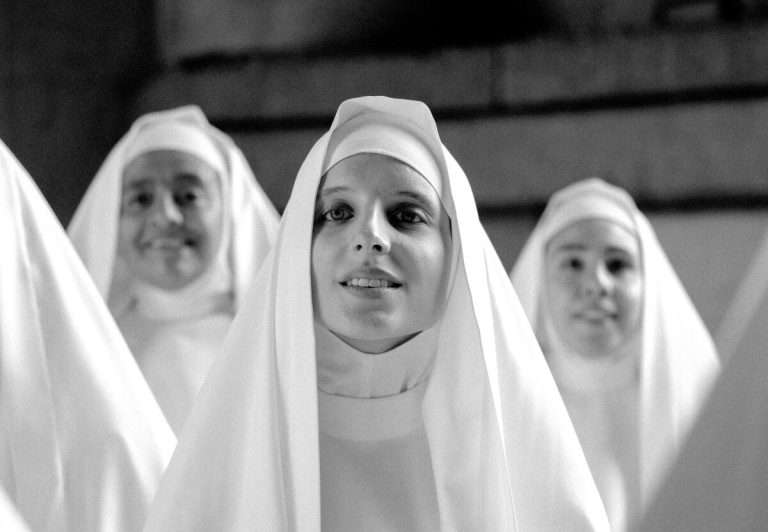There’s a certain bias against genre films when it comes to film festivals and general critical acclaim – and rightly so. While a film like John Wick might have a RT rating in the 80-90%, a film like Kairo (74% in RT while simultaneously being screened at the Un Certain Regard section of the Cannes Film Festival) would always be more popular with critics, film aficionados, and people who understand Cinema. While this can work as a segue way into the intricacies of sites like Rotten Tomatoes and Metacritic, those are things that have already been discussed to death. And frankly, those are not things that I wanted to focus on to begin with.
Action. We all love them. We all love watching them. Even someone like me – someone that can be termed a ‘pretentious snob’ for my taste in films and film directors in general – likes to indulge in the occasional action flick from time to time. Even the most avid body builders engage in something called ‘cheat day’ where they eat everything they have ever wanted to their hearts content, so why should I be any different? Sometimes, I find gems within this genre as well. A good example of this would-be John Wick, which not only provides a level of intrigue and world building that had not been seen in Hollywood for a while in the first film, but also provides a genuine sense of catharsis and sheds light on the consequences of said catharsis in the later films.
Similar Read to The Night Comes for Us: John Wick: Chapter 2 (2017): The Devil In All Black
But at the end of the day, John Wick is still a big budget genre film. For all the things it does right, it can’t help but stick to the outline that is often provided within the genre it operates. And while the characterization is genuinely brilliant in these films, it doesn’t go beyond the techniques that are generally used for this genre – IE – setting up the protagonist’s life in the opening moments of the movie with the tone that is necessary to make him scary, powerful, and relatable, bolstering that characterization from time to time as necessary to the plot, and ending it all with a bang where the deed is done and the protagonist walks off into the sunset (sort of).
Even the action is used within the constraints of the genre. It doesn’t say anything meaningful about the nature of the action or meditate on the morality of such an act – something a film like Oldboy accomplishes spectacularly. All it does is set up a protagonist that we can relate to, set up a motivation as to why the bad guys should be killed in the most visceral manner possible, and then proceeds to do just that with such surgical accuracy that the catharsis audiences get from this exchange can only be compared with a gift from the gods. And by extension – the audience feel this power surging through them as well.
Similar Read to The Night Comes for Us: In Action [2021] Review: Bickering, Self-Reflective Film is Unbearably Amateurish
So it wouldn’t be a stretch to call John Wick a power fantasy, and frankly, there isn’t anything wrong with it. Even though the action genre as a whole has a lot of issues with characterization and storytelling – John Wick at least operates in a whole different class. And since it has been gradually hinting at going down more of a mature route than its contemporaries, and delivering more than just action movie catharsis and violent set pieces, I really couldn’t find anything to complain.
This is why I was skeptical to watch ‘The Night Comes for Us’ on Netflix. The director of the film – Timo Tjahjanto – worked with Gareth Evans in the past, and his solo offerings seemed to be in line with the extreme martial arts films that have been churning out of Indonesia for the last decade or so – the contemporaries to John Wick that only focused on action that I mentioned in my previous paragraph. Still, I went ahead with it. This was the beginning of the pandemic, and watching something depressing right then was out of the question (If you are in a mood where you can stomach something like that, I highly recommend ‘Happy Old Year’ on Netflix). And from the opening scene, I was pretty much right with my pre-conceived notions.
The characterization was thin. The plot was somewhat generic in that a triad enforcer has a change of heart and tries to save a girl. In fact, the movie even acknowledges this in a cheeky way when one of the gangsters say, “Now this sounds like a fucking gangster movie. Don’t you think so?” This was an amusing little quip, a kind of fourth wall break between the movie and I where we both acknowledged it for what it is. What I didn’t know, that it was only going to get weirder from there.
Generally, when I watch a film, I simultaneously try to gauge the artistic merit of the film while watching the movie itself. After all, I do have a letterboxd account, and what is a cinephile without a shitload pile of ratings? When the action came (15-20 minutes into the film, excluding this introduction of the character Arian that is set in Macau), I had already decided to give the film a 3 out of 10. “The actions good, and the direction is top notch. But aside from that, I don’t see anything that elevates this out of the myriad of similar genre flicks that come out of Indonesia in droves”, I thought to myself.
Similar Read to The Night Comes for Us: John Wick: Chapter – 3 Parabellum [2019] Review: Kill Them All
But the film kept surprising me. In the course of my viewing of the film, the score of the film raised to 5. Then, it rose to 7. By the end of the film, the film had a final rating of 9/10 from me. And that is a rating that I will take to the grave. And even without some arbitrary number, I can proudly say that ‘The Night Comes for us’ is one of the best actions films I have ever seen in my entire life. Frankly, I think it is the best action film to come out in the last decade or so, even trumping a universally celebrated successes like the Wick franchise. And while the way Timo Tjahjanto superbly frames the action definitely plays a part in this, it’s the way the action is contextualized and executed that plays a part in the movie being so great.
Spectacles and set pieces in a genre films are used in action films to elicit an instant reaction from us. They kind of pander to our base instincts, in a way. And this is true not just for action films, this is true for genre film making as a whole. They all employ certain tricks and tactics that appeal to the basest nature within us. This is why it feels so satisfying to see John kill the Russian douchebag that crossed him. This is why it feels so blood curling to see the creature in ‘Lights Out’ for the first time as well. But since these set pieces aim to elicit some of the primal instincts we have, they rarely are able to go beyond that.
Also, Read: 75 Best Movies Of The 2010s Decade
And this is where The Night Comes for us, and it differentiates itself in three ways. First, aside from being superbly executed, the set pieces don’t only appeal to our base instincts, they fully flesh out the characters and actually take the thinly developed plot of the beginning to a thematic, crescendo like height at the end. Second, as the violence becomes bloodier, the violence and the outcome of the violence begins to make us question the nature of the violence itself, and whether any of this is worth it, and whether any of this should have started in the first place. This way, with each set piece, the film gradually sets up this nihilistic, hopeless world; where even the strongest of them all will have to meet their creator.
The third way the film achieves greatness is that everything it does; from the building of the theme to placing the characters on the same page as the protagonist of the film while simultaneously turning a paper-thin plot into a well realized, thematic exploration of the unescapable clutches of violence and a violent lifestyle; most of what the film does, it does through staging, blocking, and visuals. Films are an audio-visual experience, and while dialogue does play a major role here, it should be used in unison with both visuals and sound; and not used in an expository way to make up for the lack of directional skills of the film maker. I’m not saying that The Night Comes for Us doesn’t use dialogue. From introducing the initial paper-thin plot to introducing the initial setup, dialogue is used in the film. But it is used in unison with the rest of the elements, and the themes are set up and executed solely through the elements mentioned above.
First, the revelation of characters. The movie starts out with a text-based introduction to this group of mythical enforcers called the ‘Six Seas’, and we are introduced to our protagonist ‘Ito’. He is seen gunning down a village full of people for crossing their gang, when he suddenly stops and begins to shoot his comrades instead, all in the name of saving a little girl. A little girl he has no connection with. A little girl he shouldn’t care for. When the motive is revealed, he says that he is tired of this meaningless violence, tired of this lifestyle where they are as good as dead. In the little girl, he saw the struggle for breathing, a reach for life itself. And that’s why, he saved her. And that’s why, he wants to go away with her.
Keep in mind that all of this is established within the first few minutes of the film, followed by an introduction of key cast that would be helping Ito on his mission. And since this is set up in such a cookie-cutter way, both the plot and characters are razor thin at this point. But as soon as the first fight scene starts, it slowly but gradually starts to peel back the layers. And with each subsequent fight scene, the layers are peeled back a bit more, until we arrive to the magnificent ending.
Similar Read to The Night Comes for Us: John Wick: Chapter 3 – Parabellum [2019] Amazon Review – Brutal And Beautiful
Ito is a legend, a kind of boogeyman for the Indonesian underworld. So he should have no problem dispatching a couple of expandable characters. In actions films, this is the fight scene that shows the main character in complete control and shows him to be a force to be reckoned with. While the fight scene in this film follows this formula as well, it adds its own little garnishes as well. For example, Ito is shown to be a force to be reckoned with, but he is not a god. Throughout the sequence, he is stabbed, beaten, and bloodied, and the sequence actually ends with his capture. From the first action scene, the theme is setting up no matter how alluring the violence looks, it is actually a very dangerous thing. And no matter how powerful one is, no one can escape what’s coming.
As the fights gets bloodier and more visceral, these theme gets more set inside out head. A good example of this would be the apartment complex fight. After Ito’s capture, goons are sent to his friend Fatih’s place to kill off the girl. The main two people in this scene is Fatih – someone who is initially set up to be good natured man with a strong sense of justice, and Bobby – a batshit crazy guy who was responsible for Ito becoming a Six Seas in the first place, and who has been looking for redemption ever since.
Also, Read: 10 Best Netflix Original Movies of 2020
The fight starts of well enough, but as the fight progresses, and our characters lose litters upon litters of blood, the original theme of violence gets more fleshed out, and people who once started out as thinly written characters come into their own. For example, Bobby comes close to death numerous of times, but he fights on and no matter what, he doesn’t let the goons get to his friends or the girl. Through this sequence, his desperation for redemption truly comes to the forefront.
In the end, when two other super assassins (presumably other members of the six seas) enter the scene, he tells Fatih to take the girl and escape. He knows he has no chance of escape, but this is his chance of redemption. Besides, he is batshit crazy, and he truly wants to take a chance at this. And when he dies saving his friends, his arc comes to a close, and a character that was thought to be of a single note gets the death he deserves.
Death is a central plot device that The Night Comes for Us uses to develop its themes. Shortly after Bobby’s death, Fatih tries to escape with the girl, but he soon realizes that there is no way out, in action scenes, once we get attached to a character, we get the catharsis we need by seeing them walking off to the sunset. Fatih has already been established as a well-rounded character by this point, and by his escape from the building, the sequence would provide the viewers with much needed catharsis.
But he knows he can’t do that, so he sacrifices himself so that the girl can hide. And while he tries to go out in a blaze of glory, he ultimately turns into another dead body from the Indonesian underworld. He fails to protect the girl in a way as well, as she has to stab a guy in the neck, and loses her innocence in the process. Thus, with another grueling death and an antithesis to catharsis, the audience are bled dry even more, and the theme of the film comes to forefront even more.
Similar Read to The Night Comes for Us: Maria Netflix [2019] Review: Another Soulless Fillipino Action Film
And this is how the film progresses with its trifecta of strengths. All of the character and thematic development is done mostly through the set pieces. All of the set pieces are subverted from the typical action set piece, in the way that as each set piece grows more bloody and more visceral than the previous one, the audience only grows wearier and becomes more emotionally bled, just like Ito was in the beginning of the film. And again, all of these is done though set pieces, taking full advantage of a medium that falls short only to video games – in terms of the different ways a story can be told. And all of this culminates in a finale that one has to see to believe, and with a cut to black that might be up there with cinemas most balls-iest.
By the end, Ito has saved the girl, somehow. But he is near death, and he knows there is no escape for him. All his friends are dead as well, and the city is in complete chaos. And he is not even sure if the girl is saved as well. She has already lost her innocence, and she will have to fend for herself in world that is as cruel as the world she has escaped, plagued with the PTSD of what has happened. By the end, we truly understand what Ito meant at the beginning of the film, and why he did what he did. By the end, we truly understand the nature of violence, and why this kind of power fantasies are not something one should aspire after. After all, according to Ito, they were all dead men. And at the end of the day, you can’t kill what’s already dead.
Also, Read: The 45 Best Films Of 2020 (So Far)
And this is why The Night Comes for Us is such a magnificent film. From its superb direction, to its elevation of the Indonesian crime genre as a whole, Timo Tjahjanto has created a magnificent film here, a film that should be talked about more and more. Sadly, it is criminally underseen, and Netflix really should have marketed this film better. They have something that can kill a franchise like John Wick itself, and they are too afraid to use it. Hopefully, as Netflix is giving the Asian region more attention, this film will become highlighted as well. And with the recent announcement of Tjahjanto’s next project, this director is just inches away from the spotlight.
But for now, if you have liked this analysis, if any of what I have written has resonated with you, then I urge you to watch the film. Plan out a weekend, grab the biggest TV you can find, stack the table with your assortment of choice, and let the The Night comes for us blow your mind. And as always, remember the parting words of Ito as you finish the film, because as alluring as violence seems, you’ll be nothing more than a walking corpse. And as the saying goes, you can’t kill what’s already dead.






![I Am Cuba [1964]: When Propaganda becomes Poetic](https://79468c92.delivery.rocketcdn.me/wp-content/uploads/2021/06/i-am-cuba-thumb-768x477.jpg)
![Lulli [2021] Netflix Review: An Unremarkable Romantic-drama despite its Engaging Parts](https://79468c92.delivery.rocketcdn.me/wp-content/uploads/2021/12/Lulli-2021-Netflix-768x384.jpg)



